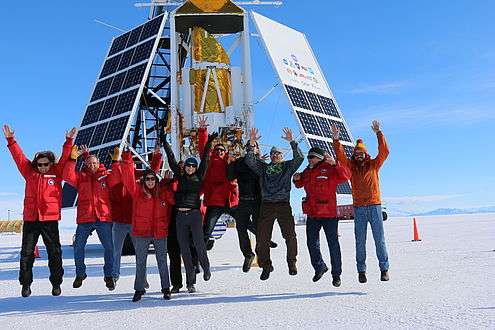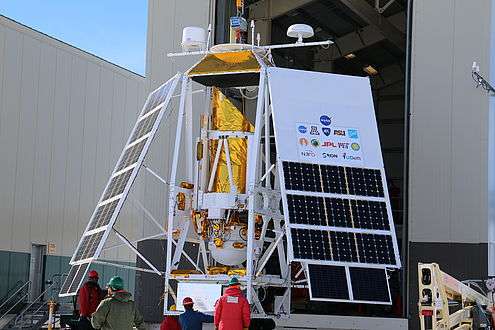Polar balloon STO2 to go the edge of space with Dutch instruments

Stars and planets are born from clouds of molecules that coagulate and eventually fall apart again in the space between the stars in a galaxy. Astronomers still do not know exactly how this works.
That is why NASA's stratospheric balloon STO2 will be launched from Antarctica to the edge of space to measure cosmic far infrared radiation. At an altitude of 40 kilometers above Antarctica, the air is crystal clear. There is scarcely any water vapor, which often blocks this type of radiation at other locations in the atmosphere.
The NASA balloon that will carry the measuring instruments to this altitude will make use of the circular polar vortex, a stable airflow on which the balloon can circulate with for one or more rounds of about 14 days each.
This will allow scientists to carry out observations for a period of two weeks before they find the balloon at nearly the same location again. STO2 has been developed under the leadership of the University of Arizona and contains vital contributions from SRON Netherlands Institute for Space Research (Utrecht and Groningen) and tech university TUDelft. These are three receivers for 1.4, 1.9 and 4.7 terahertz respectively.
pectra of radiation at these frequencies often disclose the presence of elements in space, including electrically neutral atomic oxygen. The localization of that last element in space, which can be achieved using the 4.7 terahertz receiver, is a long-cherished dream of astronomers. It is the first time a 4.7 terahertz receiver will be brought to the edge of space for an unrestricted view. Together with the Massachusetts Institute of Technology (MIT), the partners developed a reference source for radiation at this frequency. Electrically neutral atomic oxygen reveals us places in the gas clouds between stars that are particularly warm.

This is a good indicator for stars that only just formed. This way we can directly find the birthplaces of new stars. STO2 is therefore an important scouting mission for future terahertz missions using a satellite in space. Far infrared radiation is sometimes also referred to as terahertz radiation. One terahertz is equivalent to a wavelength of 300 micrometers. The University of Arizona is scientifically in the lead of the mission. The teams of prof. dr. Alexander Tielens (Universiteit Leiden) and prof. dr. Floris van der Tak (SRON/Rijksuniversiteit Groningen) will help in the international scientific analysis of the observations. Thursday the team on Antarctica gets three hours of good weather conditions. If this is too short, nice launching weather will follow in the following days.
More information: A livestream of the mission from NASA: www.csbf.nasa.gov/antarctica/ice.htm
Provided by Delft University of Technology




















